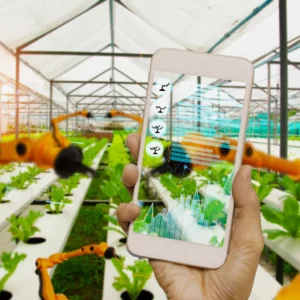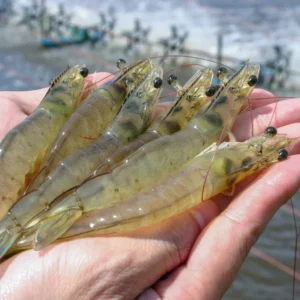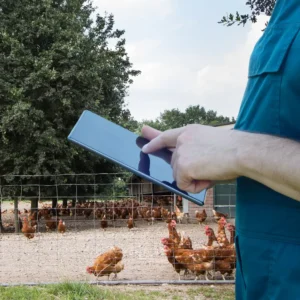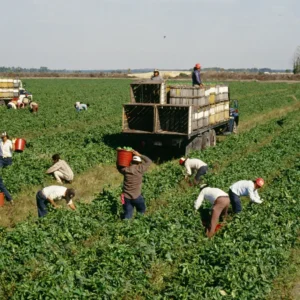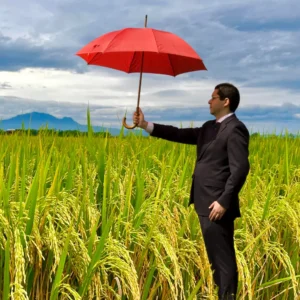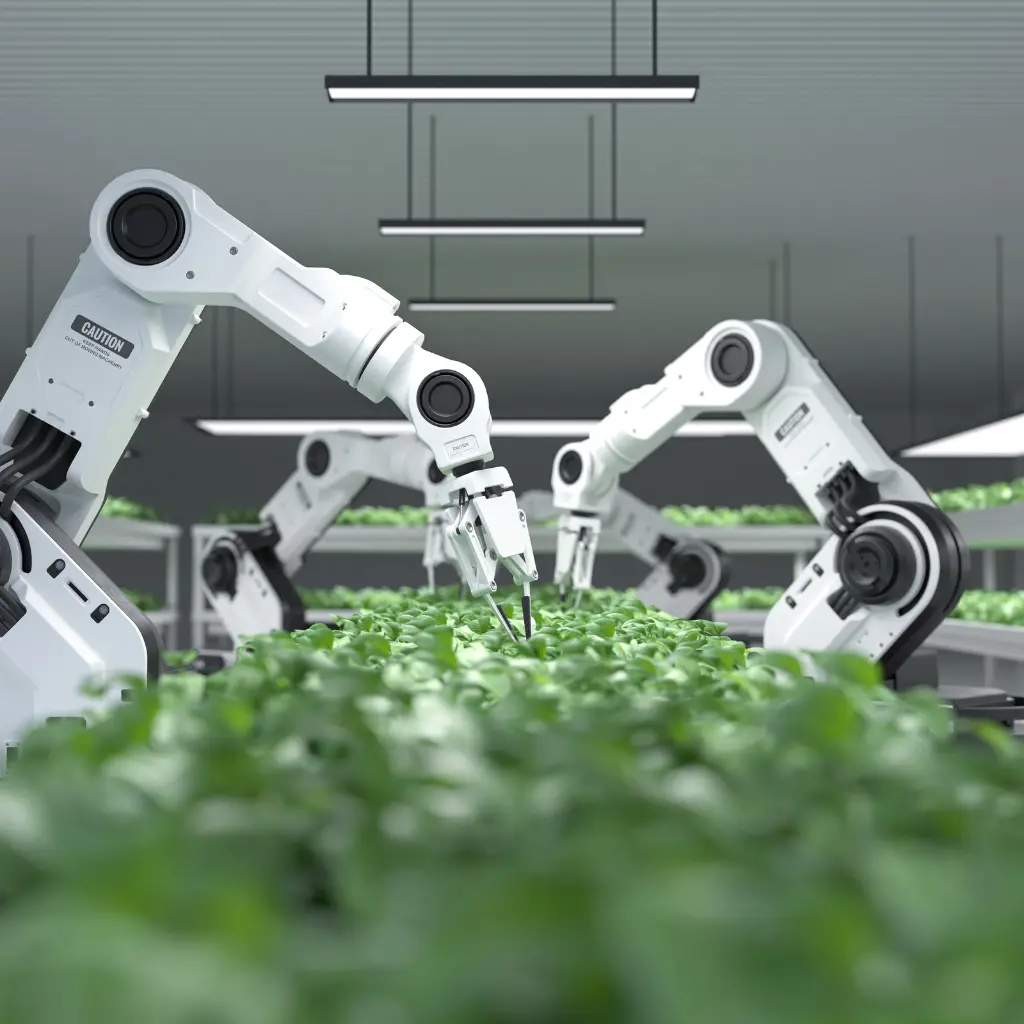
Robotic Revolution
AI in Agricultural Automation
Welcome to the agricultural revolution powered by AI! In this exploration of “AI in Agricultural Automation,” we embark on an exciting journey through the innovative landscape of farming. From the dawn of autonomous tractors that meticulously navigate fields to the marvels of robot weed control and machine-led harvests, we’ll uncover how artificial intelligence is reshaping the agricultural industry.
Our adventure continues as we delve into the intricate world of designing agri-robots using machine learning, where intelligent machines adapt, learn, and evolve. We’ll explore how modern greenhouses benefit from AI-driven automation, maximizing yields and sustainability.
Real-time insights into robotic operations and AI chatbots for maintenance will showcase how technology keeps farming seamless. But the intrigue doesn’t end there; we’ll also glimpse the future—farms where robots and AI are the driving forces, revolutionizing agriculture.
As we celebrate the success of agri-robotics and look forward to the farms of the future, join us in pondering how we can harness AI to create a farming world that is not just productive but also sustainable, efficient, and equitable for all.
Table of Contents
Navigating fields with autonomous tractors
In the ever-evolving world of agriculture, AI-driven autonomous tractors have ushered in a new era of efficiency and precision. These intelligent machines, equipped with machine learning algorithms, have revolutionized how farmers cultivate their land.
Gone are the days of manual steering and guesswork. Today, these tractors utilize advanced GPS systems and onboard sensors to navigate fields with unmatched accuracy. They can follow predefined routes and avoid obstacles, reducing the need for human intervention.
But that’s not all. These tractors play a pivotal role in AI in Agricultural Automation, serving as the backbone of modern farming. They help optimize planting, irrigation, and harvesting, resulting in higher yields and reduced resource wastage.
Picture a world where farmers can remotely monitor their fields being ploughed, cultivated, and sowed by robots in real time. This is the present and future of agriculture, where machine learning in agri-robot design enhances productivity, sustainability, and overall farm management. With the help of these intelligent robots, farmers can efficiently manage their farms and maximize their yields. It’s time to embrace a new farming era where technology and nature work hand in hand.
As we delve deeper into agri-robotics, we’ll explore another fascinating facet: Weed elimination with robotics. How are AI-powered robots tackling the age-old challenge of weeds? Let’s find out.
Weed elimination with robotics
Building on the strides made in AI in Agricultural Automation, we now turn our attention to one of the age-old challenges in farming: weed control. As autonomous tractors pave the way for precise agriculture, a new cadre of intelligent robots is taking on the battle against unwanted plants.
These robot weed control machines are designed with AI-powered precision, making them adept at distinguishing between crops and weeds. Armed with cameras and sensors, they patrol fields, identifying and eliminating weeds with surgical precision.
Imagine a future where fields remain weed-free without the need for constant human labour. These robots not only improve efficiency but also promote sustainability by reducing the environmental impact of weed management.
With their relentless dedication and accuracy, these weed-eliminating robots represent a significant leap forward in modern agriculture. They’re just one part of the more significant AI-driven revolution in farming. So, how do these robots work hand-in-hand with machine-led harvests? Let’s delve deeper into the exciting world of agri-robotics.
Machine-led harvests
From weed elimination with robotics, we seamlessly transition to another remarkable facet of AI in Agricultural Automation—machine-led harvests. These sophisticated agri-robots, empowered by AI and ML, redefine how we gather our crops.
Picture a scenario where fruit-picking robots equipped with AI-optimized fruit-picking algorithms roam through orchards, delicately plucking ripe produce with precision, speed, and care that surpasses human abilities. These robots can distinguish between ripe and unripe fruit, ensuring a bountiful and high-quality harvest.
In the world of precision agriculture, timing is crucial. Harvest robots with AI can analyze data from various sources, including weather forecasts and crop maturity indicators, to determine the ideal harvest moment. This ensures that every fruit is picked at its peak, reducing waste and increasing profits for farmers.
Moreover, these robots are tireless and can work around the clock, accelerating the harvest process. They operate in various conditions, from open fields to greenhouses, where AI in greenhouse automation plays a pivotal role.
But how are these remarkable robots designed and trained to perform such intricate tasks? The answer lies in ML in agri-robot design, where machine learning algorithms enable them to adapt and learn, ensuring they remain at the forefront of agricultural efficiency. Let’s dive into the fascinating realm of designing agri-robots using machine learning.
Designing agri-robots using machine learning
As we witness the marvels of machine-led harvests, it’s essential to understand the brains behind these agile agri-robots—the power of machine learning (ML). These robots, which carefully navigate fields and pick fruit with care, owe their prowess to ML.
Machine learning enables these robots to adapt, learn, and improve their performance. They analyze vast amounts of data, from soil quality to crop health, to make informed decisions. But how exactly is this magic accomplished?
The process begins with ML in agri-robot design, where engineers and data scientists train these robots using supervised and unsupervised learning techniques. They expose the robots to various scenarios, helping them recognize patterns and make autonomous decisions.
The robots’ sensors gather real-time information about their environment, and ML algorithms process this data to make split-second decisions. This allows them to navigate fields without colliding with obstacles, differentiate between crops and weeds, and adjust their harvesting techniques for different fruits.
Machine learning isn’t just about teaching robots; it’s about enabling them to learn and evolve. So, what’s the next frontier in this AI-driven revolution? Explore the fascinating world of Modern greenhouses: AI-driven automation, where technology transforms enclosed spaces into agricultural powerhouses.
Modern greenhouses: AI-driven automation
Building upon the wonders of designing agri-robots using machine learning, let’s step into the world of futuristic agriculture—the realm of modern greenhouses powered by AI-driven automation.
Imagine self-sustaining greenhouses where AI controls every aspect of plant growth. These high-tech marvels leverage AI to create the perfect conditions for crops to thrive year-round.
AI in greenhouse automation orchestrates a symphony of factors, from temperature and humidity to light and nutrient levels. Smart sensors continually monitor and adjust the environment in real-time, ensuring optimal growing conditions. This not only boosts yields but also conserves resources.
The future of agriculture is undoubtedly greener with these AI-enhanced greenhouses. They extend growing seasons, reduce the need for pesticides, and minimize water consumption. But how do these systems provide real-time insights into robotic operations? Let’s uncover the secrets behind this synergy between AI and agriculture.
Real-time insights into robotic operations
In the world of AI in Agricultural Automation, where modern greenhouses thrive under AI’s watchful eye, an essential component emerges—real-time insights into robotic operations. These insights form the backbone of efficient, data-driven agriculture.
Within AI-driven greenhouses, sensors meticulously track everything, from temperature fluctuations to nutrient levels. These real-time robot monitoring systems are integral, ensuring that the robots tasked with tasks like fruit picking operate flawlessly.
But it doesn’t stop there. Imagine robots in the open fields, ploughing and planting, guided by real-time data. They adapt instantly to changing conditions, optimizing their actions for maximum efficiency. This not only saves time and resources but also enhances crop yields.
With each action recorded and analyzed, these robots become more innovative and efficient, thanks to ML in agri-robot design. But what if issues arise? This is where AI chatbots for robotic maintenance come into play, providing instant solutions and preventing downtime.
As we explore how AI empowers agri-robots in real-time, we delve deeper into how these chatbots aid in robot upkeep, ensuring that these mechanical marvels remain at the forefront of agricultural innovation. So, how exactly do they do it? Let’s unravel the secrets behind AI-driven maintenance.
Chatbots aiding in robot upkeep
In our journey through the marvels of AI in Agricultural Automation, we’ve witnessed how robots thrive under real-time scrutiny and data-driven decision-making. But what happens when these robotic heroes need a helping hand? This is where AI chatbots for robotic maintenance come to the rescue.
Imagine a scenario where a robot in the field encounters an issue. Instead of waiting for a technician, it connects to an AI-powered chatbot for immediate assistance. These chatbots, equipped with vast knowledge and algorithms, diagnose problems swiftly, providing step-by-step solutions. This minimizes downtime and keeps the farming operation running smoothly.
Furthermore, chatbots go beyond just troubleshooting. They schedule routine maintenance, order replacement parts, and even predict when a robot might require servicing. Their proactive approach ensures that agri-robots remain in peak condition throughout the farming season.
But what’s next in this fascinating journey of AI and agriculture? How do chatbots collaborate with robots to ensure they pick the perfect fruit, a feat that requires delicacy and precision? Let’s uncover the intriguing world of AI-optimized fruit-picking robots and their role in redefining the future of farming.
Picking the perfect fruit with robots
From troubleshooting and maintenance, our journey through the wonders of AI in Agricultural Automation now leads us to the sweet spot: picking the perfect fruit with robots. How do agricultural machines ensure precise and careful harvesting of every apple, berry, or grape?
These AI-optimized fruit-picking robots have advanced sensors and algorithms to identify ripe fruit, even in complex environments like dense orchards. They use gentle robotic arms to pluck fruits without causing damage, mimicking the dexterity of human hands.
Machine learning plays a vital role here as well. These robots learn from experience, improving their fruit-picking techniques over time. They adapt to different fruit varieties, sizes, and shapes, ensuring nothing goes to waste.
Moreover, these robots work tirelessly, day and night, ensuring no fruit is left behind. They’re a testament to the synergy between AI and agriculture, promising higher yields, reduced labour costs, and minimal fruit wastage.
But as we marvel at this technological feat, we can’t help but wonder about the broader implications. How are these innovations transforming agriculture as a whole? Join us in the next segment, where we’ll celebrate success in agri-robotics and explore the future of farming.
Celebrating success in agri-robotics
After witnessing the remarkable strides made in picking the perfect fruit with robots, it’s time to take a moment to celebrate the incredible success of AI in Agricultural Automation. These agri-robots have transformed the face of farming in ways previously unimaginable.
Farmers now benefit from higher yields, reduced labour costs, and more sustainable practices, all thanks to the tireless efforts of these intelligent machines. Experience precision field navigation, chemical-free weed elimination, and unparalleled crop care.
The significance of machine learning cannot be overstated. It enables robots to learn and adapt, making them more efficient. With machine learning, robots can continuously improve and evolve, allowing them to perform tasks with greater precision and accuracy. As we continue to rely more on automation, machine learning will remain crucial in ensuring that robots can keep up with the ever-changing demands of the modern world. And the integration of real-time monitoring and AI-powered chatbots has made maintenance a breeze, minimizing downtime.
The success of agri-robotics isn’t just a technological achievement; it’s a testament to human ingenuity and our ability to harness AI for the betterment of our planet. But what lies ahead? How will robots continue to shape the farms of the future? Join us as we explore the fascinating prospects in Robots and the Farms of the Future.
Robots and the Farms of the Future
As we celebrate the remarkable achievements in AI in Agricultural Automation, we must also cast our gaze forward to the farms of the future. What lies ahead in this transformative journey that agri-robots have embarked upon?
The answer is a vision of agriculture that’s more sustainable, productive, and efficient than ever before. In future farms, autonomous tractors equipped with AI-driven autonomous tractors will not only plough and sow but also analyze soil health on the fly, optimizing nutrient delivery.
Robot weed control will evolve further, eliminating the need for herbicides. AI-powered robots will continue learning, ensuring even greater precision in distinguishing crops and weeds.
Machine-led harvests will become the norm, with robots capable of handling an ever-expanding range of crops and conditions. With AI-powered fruit-picking robots, you can be sure that every fruit picked is of the highest quality. You can increase your yield and maximize profits by utilizing precision and efficiency. So why settle for anything less than perfection? Opt for AI-optimized fruit-picking robots today.
Greenhouses, powered by AI in greenhouse automation, will expand in number and sophistication, allowing for year-round production of a wide variety of crops. These enclosed ecosystems will become more energy-efficient and sustainable.
But what will it take to make this vision a reality, and how will society adapt to this agricultural revolution? As we conclude our exploration of agri-robotics, let’s ponder the question: How can we harness AI to create a future of farming that benefits all?
Conclusion
In this captivating journey through the world of agriculture, we’ve witnessed the incredible impact of AI in Agricultural Automation. The transformation is profound, from AI-driven autonomous tractors that navigate fields precisely to robot weed control, eliminating the need for chemicals.
AI in greenhouse automation extends the growing season, making sustainable farming a year-round reality. These greenhouses, managed by AI, reduce resource consumption while maximizing yields.
Moreover, real-time robot monitoring and AI chatbots for robotic maintenance minimize downtime, ensuring seamless farm operations. The success of agri-robotics showcases human ingenuity at its best.
Looking ahead to the farms of the future, we see a world where technology harmonizes with nature. Autonomous tractors, weed control, and harvesting robots will redefine farming. Greenhouses will flourish, and AI will become the guiding force.
But the question remains: How can we harness AI to ensure these advancements benefit all? The answer lies in continued research, responsible implementation, and collaboration. Together, we can cultivate a future where agriculture is productive, sustainable, efficient, and equitable.
As we celebrate the present achievements and the promise of tomorrow, let’s keep nurturing the bond between AI and agriculture, striving to create a future where farms of all sizes thrive and the bounty of our fields nourishes the world.
Related Articles
- AI in Smart Agriculture – Precision Farming
- AI in Modern Aquaculture – Underwater Harvest
- AI in Animal Farming – Tech Meets Livestock
- AI in Sustainable Agriculture – Green Gains
- AI in Agricultural Supply Chain – From Farm to Table
- AI in Agricultural Biotechnology – Bespoke Crops
- AI in Agri-Finance and Insurance – Safeguarding the Harvest
- AI in Farming Tools and Machinery – Equipped for the Future
- The AI Urban Farming Revolution – Cultivating Cities
- AI in Post-Harvest Care – Beyond the Harvest
- The Surge of Agri-Tech AI Platforms – Digital Farming
- AI in Combatting Crop Diseases – Healthy Harvests
- AI in Boosting Organic Farming – Natural Nurturing
- AI in Agricultural Supply Chain Management
- AI in Precision Agriculture: Farms for a Sustainable Future
- AI in Crop Forecasting and Analysis: New Agricultural Era
- The Role of AI in Agricultural Robotics: Revolutionizing Farming
- AI in Smart Greenhouses: Revolutionizing Sustainable Agriculture

Arindam Roy
An Automation Consultant with 25+ years of IT Experience
Forbes Articles related to AI usage in the Agriculture Sector:

